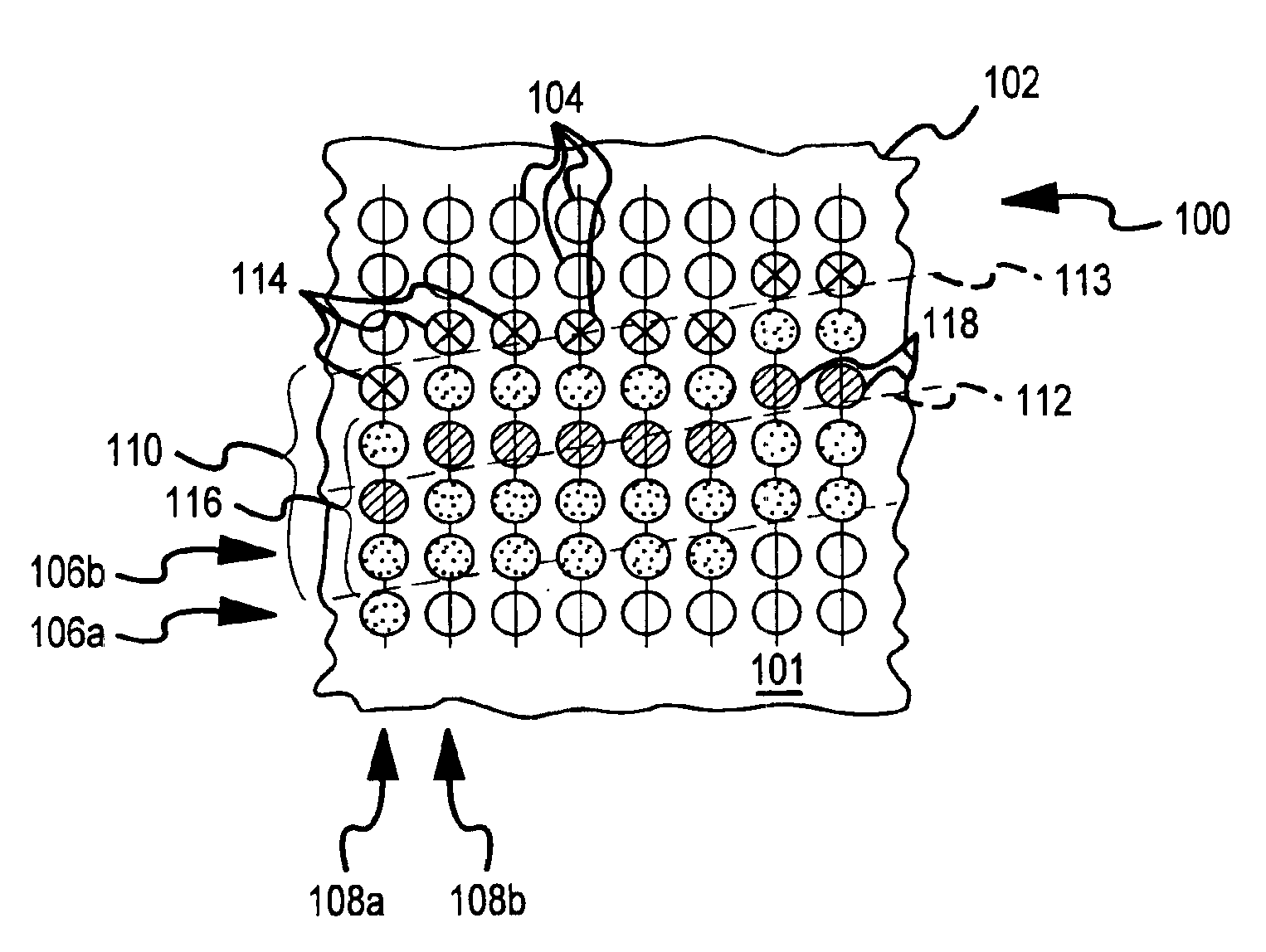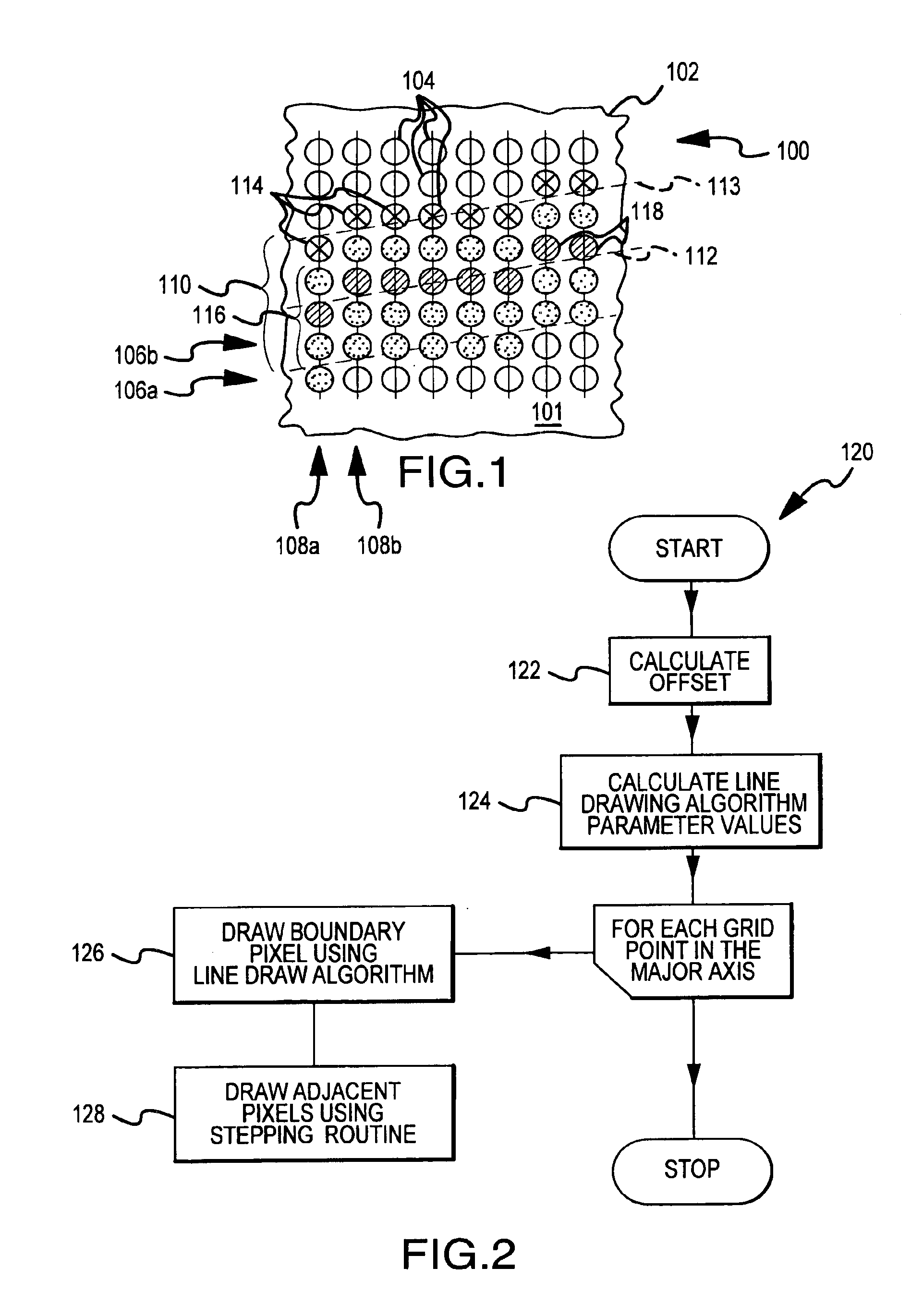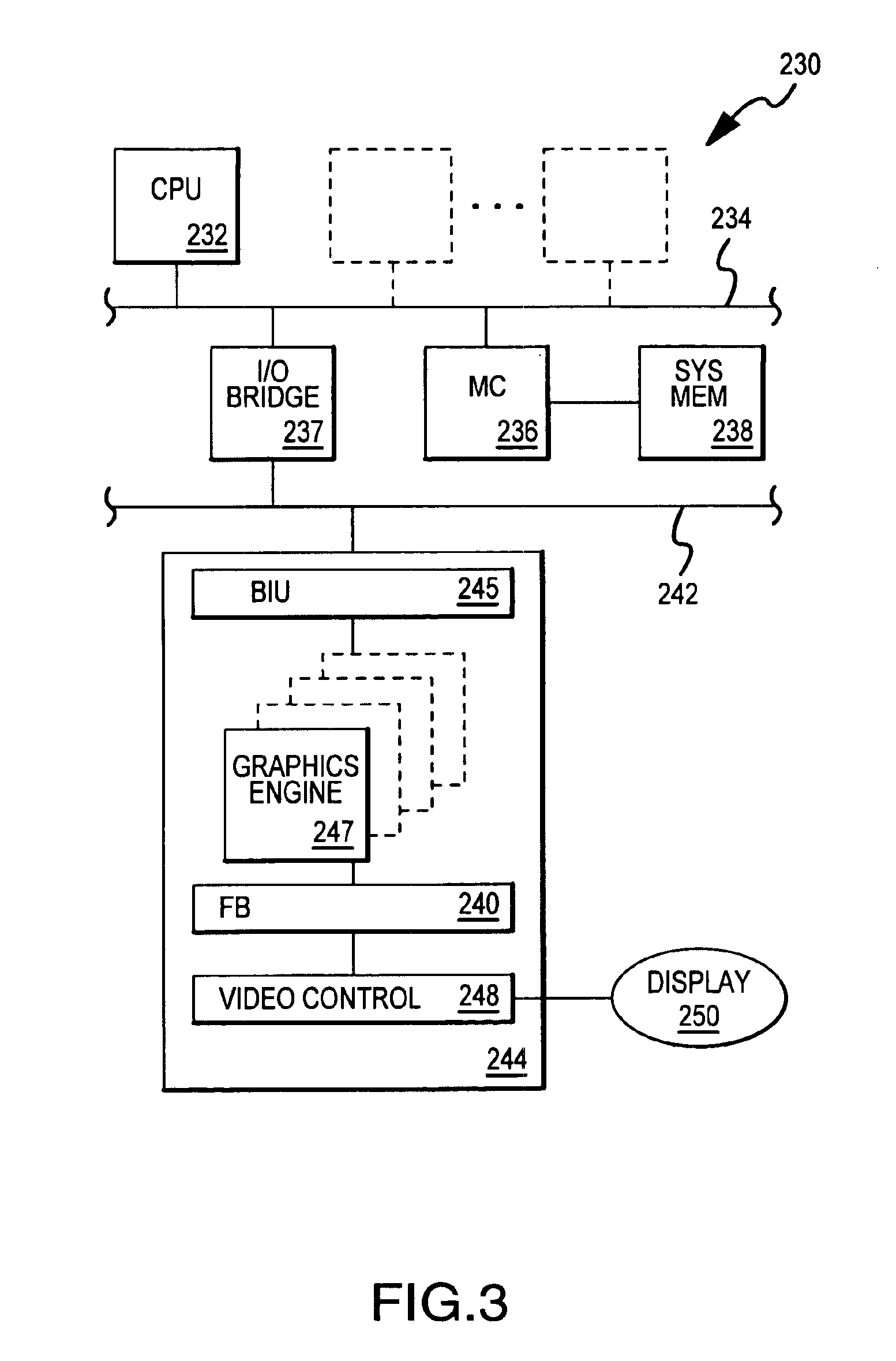Method and apparatus for drawing thick graphic primitives
- Summary
- Abstract
- Description
- Claims
- Application Information
AI Technical Summary
Benefits of technology
Problems solved by technology
Method used
Image
Examples
Embodiment Construction
[0014]Turning now to the drawings, FIG. 1 depicts a portion 102 of a display 100. Display screen 100 includes a plurality of display picture elements (pixels) 104 arranged in an array of rows 106a, 106b, etc. (collectively referred to as rows 106) and columns 108a, 108b, etc. (collectively referred to as columns 108). Display 100, as shown in FIG. 1, displays a portion of a thick graphic primitive 110 centered around an origin line 112. A thick primitive, as used in this disclosure and as defined by such industry standard interfaces for graphics hardware such as OpenGL, refers to a primitive with a thickness of greater than one pixel. Thick primitive 110 of FIG. 1 includes a plurality of boundary pixels 114, and for each boundary pixel 114, a set of adjacent pixels 116. The present invention contemplates a method of drawing thick primitive 110 that reduces execution time by minimizing the portion of the line drawing routine that uses a line drawing algorithm, which requires measurab...
PUM
 Login to View More
Login to View More Abstract
Description
Claims
Application Information
 Login to View More
Login to View More - R&D
- Intellectual Property
- Life Sciences
- Materials
- Tech Scout
- Unparalleled Data Quality
- Higher Quality Content
- 60% Fewer Hallucinations
Browse by: Latest US Patents, China's latest patents, Technical Efficacy Thesaurus, Application Domain, Technology Topic, Popular Technical Reports.
© 2025 PatSnap. All rights reserved.Legal|Privacy policy|Modern Slavery Act Transparency Statement|Sitemap|About US| Contact US: help@patsnap.com



